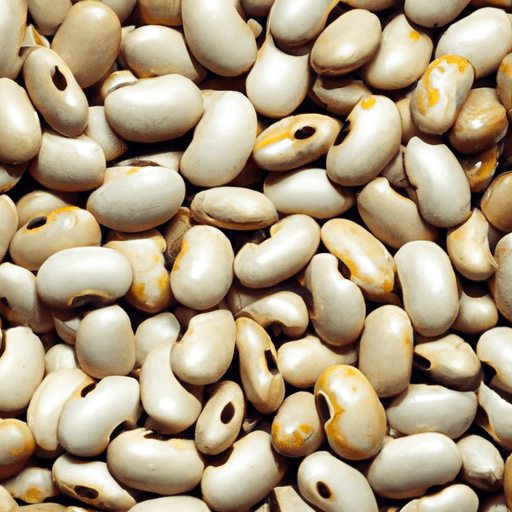Discover the Versatility of Dried Cannellini Beans
When it comes to legumes, few are as cherished as the humble cannellini bean. These ivory-colored wonders are loved by cooks around the world for their distinct taste, versatility in the kitchen, and impressive nutritional profile. Whether you’re a seasoned chef or a novice in the culinary world, dried cannellini beans are a must-have ingredient to elevate your dishes to new heights.
Exploring the Taste
Cannellini beans boast a delicate and buttery flavor that is both mild and satisfying. They have a creamy texture that pairs well with a variety of ingredients, making them an ideal addition to countless recipes. These beans have a mild earthiness that can complement both bold and subtle flavors, allowing them to take on various seasonings and spices without overpowering the dish.
Common Uses in Cooking
One of the reasons why dried cannellini beans are beloved by cooks is their sheer versatility. These legumes lend themselves to a wide range of culinary creations. Here are some popular ways to use them:
Soups and Stews
Cannellini beans make a fantastic addition to soups and stews. Their creamy texture adds body and richness to any broth, while their mild taste enhances the overall flavor profile of the dish. From classic minestrone to hearty Tuscan bean soup, the possibilities are endless.
Salads and Side Dishes
In salads or side dishes, cannellini beans provide a delightful contrast in both taste and texture. They offer a substantial, protein-packed element that can transform an ordinary salad into a satisfying and nutritious meal. Roasted root vegetables paired with cannellini beans create a hearty and wholesome side dish that ticks all the boxes.
Dips and Spreads
When mashed or pureed, cannellini beans become the perfect base for dips and spreads. Whip them up with garlic, lemon juice, and olive oil for a simple, delicious cannellini hummus. Not only does it add depth and creaminess, but it also elevates any snack or appetizer spread.
Nutritional Powerhouse
While dried cannellini beans are celebrated for their scrumptious taste, they also offer an array of health benefits. These legumes are a fantastic source of plant-based protein, making them a staple for vegans and vegetarians. Additionally, they are an excellent source of dietary fiber, which promotes digestive health and helps maintain steady blood sugar levels.
Cannellini beans are rich in essential vitamins and minerals such as iron, magnesium, and folate. These nutrients contribute to overall well-being, supporting healthy bones, energy production, and the prevention of certain birth defects.
Past and Present
Originally hailing from Italy, cannellini beans have been a beloved ingredient in Mediterranean cuisine for centuries. They were traditionally grown in the Tuscany region and played a prominent role in dishes like the famed white bean soup, ribollita.
Today, cannellini beans have garnered international acclaim and can be found in recipes from various cultures around the globe. Their popularity stems not only from their remarkable taste but also from their ability to harmonize with an array of flavors and ingredients.
Conclusion
Dried cannellini beans are a culinary treasure that deserves a place in every kitchen. Whether you’re elevating a simple salad, enriching a hearty stew, or creating a comforting dip, these beans shine brightly. With their delicate taste, versatility, and impressive nutritional value, cannellini beans will undoubtedly become a staple ingredient in your cooking repertoire. Embrace the possibilities and let these ivory jewels transform your dishes into culinary masterpieces!
Dried Canelini Beans
Origin: Canelini beans, also known as white kidney beans, originate from South and Central America. They were domesticated over 4,000 years ago and have been a staple food in many cultures throughout history.
Common Uses: Canelini beans are commonly used in various cuisines around the world. They have a creamy texture and mild flavor that makes them versatile for different dishes. In Italian cuisine, they are commonly used in soups, stews, salads, and as a side dish. Canelini beans are also a key ingredient in dishes like minestrone soup and pasta e fagioli.
Nutritional Benefits: Canelini beans are a nutritious food choice. They are an excellent source of plant-based protein, dietary fiber, and complex carbohydrates. They are also a good source of essential minerals like iron, magnesium, and folate. Canelini beans are low in fat and cholesterol, making them a healthy addition to a balanced diet.
Unique Properties: One of the unique properties of canelini beans is their ability to absorb flavors and hold their shape during cooking. This makes them suitable for dishes that require long cooking times, such as slow-cooked stews and casseroles.
Historical Significance: Canelini beans have a long history of culinary use. They were introduced to Europe by Spanish explorers in the 15th century and quickly became popular due to their taste, texture, and nutritional value. In ancient Rome, canelini beans were considered a common food for both the rich and the poor. They were often used as an offering during religious ceremonies and were sometimes used as a voting system, where white beans represented a positive vote and black beans represented a negative vote.
These facts provide an overview of dried canelini beans, including their origin, common uses, nutritional benefits, unique properties, and historical significance.




Use the share button below if you liked it.
It makes me smile, when I see it.